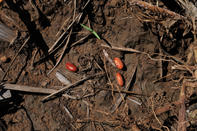Quantity Rewarded Over Quality
African soils are already nutrient-poor. In addition, the careful tailoring of our crops to be high yielding, or to meet specific market demands in terms of taste, colour or texture, is steering crop selection and breeding away from the tasteless, invisible but critical component of food: nutritional density.

Many studies have found that the nutrient load in certain fruits and vegetables has been on a steady decline over the past half-century. One study, published in the British Food Journal, compared the mineral content of some fresh produce from before the Second World War with that grown in the 1980s.
Vegetables showed a significant reduction in sodium, copper, magnesium and calcium, while fruit had lost magnesium, iron, copper and potassium in notable quantities.
The resulting dietary inadequacy ‘has been fuelled in part by the agricultural research and development community which rewards quantity over quality’, says the Global Alliance for Improved Nutrition (GAIN), ‘and has over time lost the need to preserve and augment the naturally occurring nutrient content of crops’.
Biofortification of Crops as a Solution
One solution, put forward by experts in the Copenhagen Consensus and recommended in several quarters, is the breeding of ‘biofortified’ crops either through good, old-fashioned selective breeding, or through genetic engineering. But the latter will face strong resistance.
Breeding programmes are already in place with a focus on increasing the iron and vitamin A of certain crops, according to the Copenhagen Consensus. The trick, of course, is to make sure those nutrients are carried in the part of the plant that we eat and that it occurs in a format that we can absorb when we eat it.
By Leonie Joubert